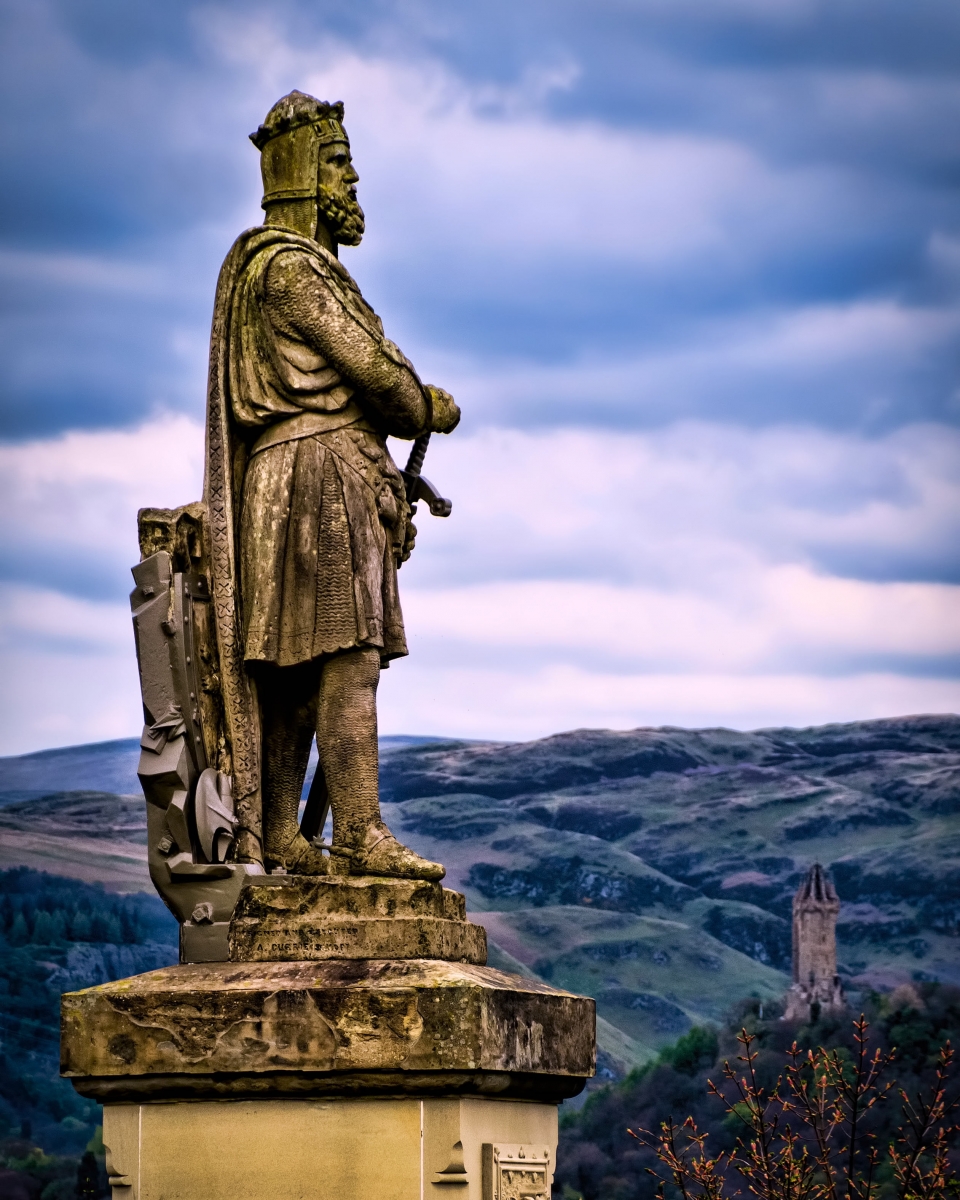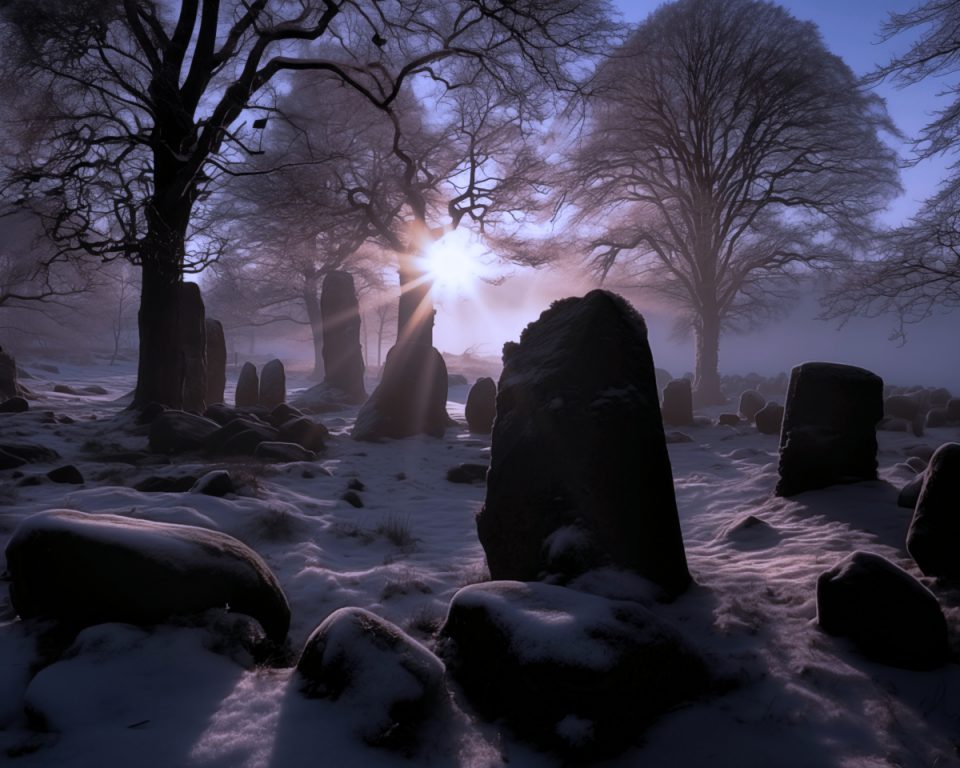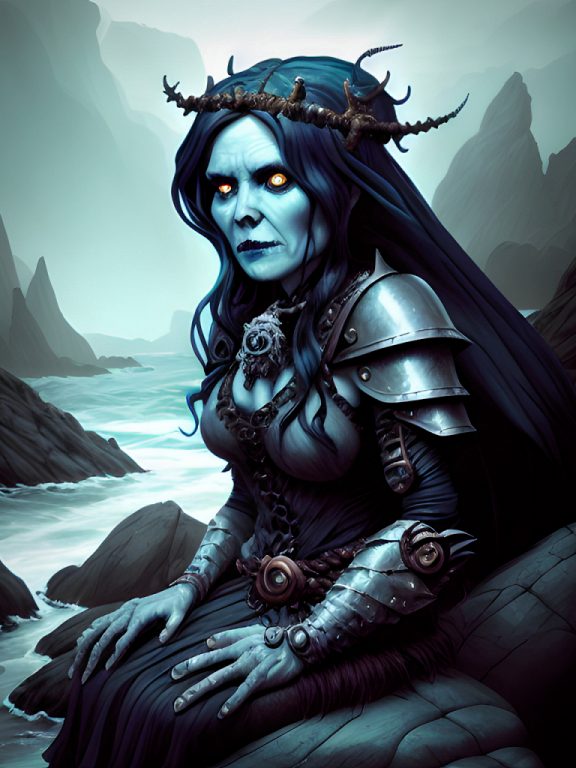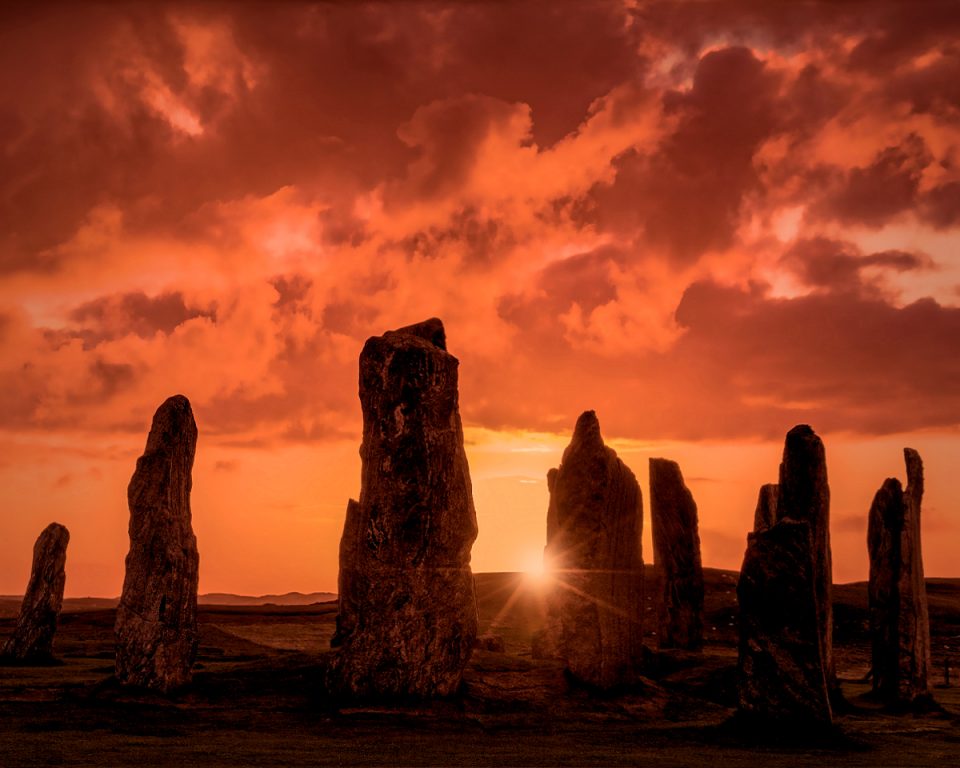Robert I, King of Scots is better known by his title Robert the Bruce. This was the man who was to become a legend, a hero, a saviour to his people. This was the man who secured Scotland’s independence from England. He lived in a time when kings saw it as their God-given right to expand their territories by invading their neighbours’ lands. It was time when serfs were bound to their masters before the Great Plague swept across Europe, destabilising the feudal system. It was a time when the Crusades were coming to an end and when jealousy would turn the King of France against the military order of monks: The Knights Templar. It was a time when the Popes were the great power-brokers of Europe and the influence of the Church was more far reaching than the crown.
Such is the legacy of this man that poems have been written about his great feats beginning with ‘The Brus’ written by John Barbour, Archdeacon of Saint Machar’s Cathedral in Aberdeen to ‘Scots Wha Hae’ written by Scotland’s great bard himself, Robert Burns. Books have been written about his exploits along with his companions, the Black Douglas and his nephew, Thomas Randolph. Now a film ‘The Outlaw King’ has been released on Netflix. Statues of the heroic king have been erected, the length and breadth of Scotland and about as many myths have grown around this man’s deeds, some of them stemming from propaganda spread by his enemies during his lifetime and at his death.
Robert the Bruce: The Origins
Robert was born into an aristocratic Scottish family on 11th July 1274. His father’s side of the family had originated in Brix in Flanders. In 1124, King David I granted the extensive estates of Annandale to his follower Robert de Brus, to secure the southern Scottish border. Robert was a common name in the Bruce family. The Bruces were also descendants of the Scottish royal family.
Robert Bruce’s mother was a formidable character. Marjorie, Countess of Carrick was descended from the ancient Gaelic Earls of Carrick. She was a woman who knew and got what she wanted and apparently held Bruce’s father captive within the walls of Turnberry Castle after he returned from the Crusades, refusing to release him until he agreed to marry her.
Robert the Bruce: A Political Agenda
Contrary to the modern-day hype surrounding Robert Bruce, his motivation for obtaining the Scottish crown was not entirely an enterprise born of patriotism, and, although it seems likely that his attitude changed over the years, Bruce’s motives do appear to be slightly more self-serving than that. His real goal seems to be the ascension of his family to royalty rather than Scottish liberation from English rule.
Evidence for this can be derived from the fact that both Bruce and his father supported Edward I’s invasion of Scotland in 1296, hoping to gain the crown after Balliol’s fall. Imagine their horror and disappointment when Edward Longshanks proceeded to install himself as king.
In 1297, Bruce, encouraged by Bishop Wishart of Glasgow, raised the standard of revolt at Irvine with the result that he was absent from the Battle of Stirling Bridge. However, when the rising failed Bruce, rather than join Wallace after the Scots victory at Stirling Bridge, kept a low profile until he could determine what the English reaction would be.
Bruce was also absent at the Battle of Falkirk, in which Wallace’s army was devastated, but he does seem to have been involved in the aftermath, whereby he burnt the town of Ayr to stop it falling into the hands of the English, as they marched south.
In 1298, after the Scots defeat at Falkirk, Wallace resigned as Guardian of Scotland to be replaced by Bruce and John Comyn. However, they soon quarrelled as Comyn supported Balliol’s claim to the throne, and Bruce had his own agenda. Bruce was ‘replaced’ a year later by Sir Ingram de Umfraville. He continued to fight on the side of the Scots until plans were put in place for Balliol eminent return to Scotland with the intention of reclaiming the Scottish throne. Then, once again, he submitted to the English king, hoping for recognition of his claim to the throne.
So, Bruce wasn’t averse to switching sides in pursuit of his goal, but this wasn’t an irregular practice amongst noblemen in pursuit of power at the time.
Robert the Bruce and the Red Comyn
1304 was a crucial year for young Robert Bruce. His father died making him the Bruce claimant to the throne. Later that year, the English captured Stirling Castle, the last stronghold of the Scottish rebels, thus forcing the Scots to capitulate. It was the death knell of a Balliol restoration. Edward I had conquered Scotland, but he was aging and wasn’t expected to live much longer. It was time for Bruce to act.
On 11th February 1306 Robert Bruce met John ‘The Red’ Comyn at Greyfriars Kirk in Dumfries. An argument ensued, swords were drawn, and the Red Comyn was mortally wounded before the high altar. As a result, Bruce was excommunicated and outlawed, whilst Scotland was plunged into civil war.
Robert the Bruce: The Coronation
The killing of the Red Comyn forced Bruce’s hand. There was no way back. Bruce realised he would have to start his ascent to power by force rather than by diplomacy. Within six weeks his old ally, Bishop Wishart had given him absolution and he was hurriedly crowned king at Scone on March 25th, 1306.
Alas, power comes at a cost. Bruce had provoked a civil war as well as incurring the wrath of the English king. On the 6th of June 1306, Bruce and his followers were defeated at the Battle of Methven. His family had to pay the price of his ambition. In the aftermath of the battle two of Robert’s brothers and a number of his key supporters were executed. His sister Mary Bruce was suspended in an open cage from the battlements of Roxburgh Castle for four years, while Isabella, Countess of Buchan, who played a role in Bruce’s coronation, met a similar fate at Berwick Castle. His sister, Lady Christian Bruce was imprisoned in a Lincolnshire nunnery while Majorie Bruce, Robert’s child to his first wife was sent to an abbey in Yorkshire. Meanwhile Robert’s wife, Elizabeth de Burgh, was held hostage in a royal residence in East Yorkshire. Bruce escaped and fled to the west. There are accounts of Bruce hiding on Rathlin Island, off Ireland, and in the Hebridean Islands.
Robert the Bruce: The Outlaw King
It is here that the legend begins. Tales are told of the dispossessed king, hiding in the mountains and in caves, suffering hardship for the good of the nation. However, at this point, Bruce was not hailed as the people’s hero. In fact, he was not overly popular. Very few bishops or nobles had been at his inauguration, and there is evidence to suggest that he intimidated many his fellow countrymen into supporting him.
Robert, spent the winter of 1306-07 in hiding, including a period living in a cave on the island of Rathlin off the coast of Antrim, Ireland with his brother, Edward. According to local folklore it is here that Robert had his life-changing moment with a spider. Apparently, he observed a spider repeatedly weaving and reweaving its web, never giving up until finally it succeeded. Robert is said to have drawn from this encounter the resolve to try again to gain control of his kingdom. Actually, the story in this form only dates back to Sir Walter Scott’s telling of it: in the original version it was one of Bruce’s supporters who witnessed the arachnid and then relayed the story to the king.
In February 1307 Robert had mustered some support and returned to South West Scotland. Two of his brothers led 18 galleys into Loch Ryan but unfortunately were surprised on landing by supporters of the Comyn family. Robert’s brothers were captured and executed. Robert fared better. He landed further north, near Turnberry, and led his small band inland to the area around Glen Trool. In March 1307 Robert and his men ambushed a larger English force hunting for him and defeated them. Then, on 10 May 1307, Robert and some 600 men overcame an army of up to 3000 English at the Battle of Loudon Hill. The tide was beginning to turn in his favour.
Robert the Bruce: A Genius in Guerrilla Warfare
Then on the 7 July 1307, Edward I of England died, within sight of Scotland. As luck would have it, Edward II was a pale shadow of Edward’s mighty and ruthless father.
Weak and ineffectual, Edward II effectively gave Robert three years’ breathing space, during which Robert waged a ceaseless and brilliant guerilla war across Scotland, attacking English supporters, and his own enemies, in particular the Comyns. During this time his powerbase grew. He first focused on his enemies in Galloway, avenging his brothers’ deaths before moving north. Having agreed on a truce with John MacDougall of Lorn in his power base of Dunstaffnage Castle, Robert went on a spree of capturing castles and then razing them to the ground so they would not fall into the hands of the English. Even his own family home at Turnberry Castle was not immune and was levelled to the ground, never to be rebuilt.
Inverlochy, Urquhart, Inverness, Nairn and Elgin Castles, all fell through treachery rather than siege. Then in December 1307 his campaign came to a halt due to a serious illness. He recovered and went on to take Balvenie, Duffus and Tarradale Castles.
Robert the Bruce and the Defeat of the Comyns
By 22 May 1308 Bruce was still unwell but his army met the Comyn Earl of Buchan near Inverurie. Buchan’s forces ran away rather than fight leaving Buchan defenceless. Robert burnt every village and killed every member of the Comyn family he encountered. He then took Aberdeen.
This left just one major stronghold of the Comyn faction intact, Dunstaffnage Castle, home of John MacDougall of Lorn with whom Robert had agreed a truce the previous year. As Robert marched west, John MacDougall set an ambush for him in the Pass of Brander near the northeast tip of Loch Awe. Anticipating this Bruce outflanked the ambush, defeating MacDougall and capturing Dunstaffnage Castle.
By 1308 Robert controlled all of northern Scotland with the exception of the castles at Stirling, Dundee and Perth. For the first time, Bruce was king in more than just name. By the end of 1309, Bruce controlled all of Scotland north of the River Tay; he had held his first Parliament and has been formally been accepted as king by the clergy of Scotland.
The Expansion of Robert the Bruce’s Power
Over the next few years, castle after castle fell to Bruce and his supporters:
- Linlithgow fell in 1310
- Dumbarton in 1311
- Perth in January 1313
- Roxburgh in March 1313
- Edinburgh in March 1314 (Famously captured by Thomas Randolph, Bruce’s Nephew)
Meanwhile, the Scots were making raids into Northern England in search of plunder and cattle.
However, one key castle still lay outwith Bruce’s power. Stirling Castle was still held by the English and was under siege, by Robert’s brother Edward. A deal was struck with the English Constable of the castle that if an English army had not arrived to relieve the castle by Mid-Summer’s Day 1314, the castle would surrender, so making an aggressive siege unnecessary. However, Edward had to react. He led a massive invasion force of some 20,000 men into Scotland.
The Battle of Bannock Burn: Robert the Bruce’s Crowning Moment
Bruce chose his ground carefully at Bannockburn, in the battle that ensued. On the 23rd and 24th of June, Bruce won a tremendous victory over a vast English army. Edward II barely escaped with his life.
This was perhaps Bruce’s greatest hour and what has earned him a special place in the hearts of the Scottish people in the generations which followed: fighting for his nation’s independence against a hugely superior English force and winning, just as Wallace had done at Stirling Bridge seventeen years earlier.
Bruce was now in total control of Scotland, but he still hadn’t achieved his aim. Scotland’s independence and Bruce’s monarchy still had not been recognised by either the English or the Pope, and this was essential if his rule was to have any credence. Edward II refused to give up his claim to the overlordship of Scotland.
Robert the Bruce and the Declaration of Arbroath
Then in 1320, the Scottish earls, barons and the ‘community of the realm’ sent a letter to Pope John XXII stating that Robert was their rightful monarch. This was the ‘Declaration of Arbroath’ drafted by the Abbot of Arbroath and it asserted the antiquity of the Scottish people and their monarchy. The Declaration of Arbroath is one of the most important documents ever written, being the first-ever declaration of independence by any nation, and containing remarkably advanced ideas in the areas of nationhood and kingship. The famous lines from this document are often quoted:
“It is in truth not for glory, nor riches, nor honours that we are fighting, but for freedom – for that alone, which no honest man gives up but with life itself.”
Four years later, Robert received papal recognition as king of an independent Scotland. The Franco-Scottish alliance was renewed in the Treaty of Corbeil, by which the Scots were obliged to make war on England should hostilities break out between England and France, thus forcing the English to fight on two fronts. In 1327, the English deposed Edward II in favour of his son and peace was made with Scotland. This included a total renunciation of all English claims to superiority over Scotland.
The Death of Robert the Bruce
Robert died on 7 June 1329. He was buried at Dunfermline. However, he had long yearned to go on a Crusade. He had never had the time, nor latterly the health, to fulfil this wish. On his deathbed, he requested that his heart be taken to the Holy Land, but it only got as far as Spain. It was there that his lifelong friend and commander the Black Douglas also met his fate and died in an attack, protecting his friend’s heart. It was returned to Scotland and buried in Melrose Abbey.
Debunking the Myths of Robert the Bruce
Robert the Bruce was born in Essex, England
Although there is no record of where Robert the Bruce was born, the most likely candidate for this birthplace is Turnberry Castle, the Ayrshire home of his mother. There is evidence that he grew up there.
Robert the Bruce was a French-speaking Anglo-Norman
The Bruces were Flemish in origin but having been granted their lands in Annandale in 1124 they were well and truly integrated into the Scottish nobility. Robert’s grandmother was a daughter of King David I of Scots and his mother was the Countess of Carrick – a rich Celtic potentate. It is difficult to believe that he did not grow up speaking the languages of the areas in which he was raised; Gaelic-speaking Ayrshire and Scots-speaking Annandale. As an educated man he would almost certainly have been able to read French and possibly Latin, but whether he could speak either of those is a very different matter.
Robert the Bruce had enormous estates in England
As well as Annandale, the Bruces owned estates in Aberdeenshire, County Antrim, County Durham, Essex, Middlesex and Yorkshire. Although they owned some valuable land in England, they were merely barons amongst hundreds of others with no real political clout. Like many Scottish Nobles who possessed lands in England, they faced a conflict of interests when Scotland and England were at war because they had to declare fealty to both Crowns.
Robert the Bruce was the rightful heir to Alexander III but Edward I appointed John Balliol as king in his stead.
When Alexander III plunged to his death leaving no heir, it was not absolutely clear who had the better claim to his throne, but since Robert was only 12 years old and both his father and grandfather were still alive, it certainly was not him. The lords and communities of Scotland decided that there should be a court of enquiry and Edward I was invited to be the chairman; he was not invited to make the decision, just to administer the process. A jury of 104 auditors was appointed to examine the claim of a total of 13 candidates, though in fact there were only two serious possibilities; John Balliol and Robert Bruce – the grandfather of the man who would eventually become king. Balliol’s claim was undoubtedly the better of the two and the jury chose him as Alexander’s successor. The notion that Edward chose Balliol because he would be more malleable is simply untrue.
Robert the Bruce betrayed William Wallace at the Battle of Falkirk
John Menteith is the man accredited with betraying William Wallace. At no point did Robert the Bruce betray him, although he always had an eye on the possibility of becoming king in the absence of John Balliol.
Robert the Bruce defeated the Edward II in one battle on a boggy field with a band of ill-equipped peasants.
By 1314 only a handful of castles were still holding out against Robert the Bruce.
The most important of these was Stirling. Robert’s brother had laid siege to the castle at Lent and agreed on a pact with the commander of the garrison, Sir Philip Mowbray. If the castle was not relieved by midsummer it would be surrendered and the garrison would be permitted to leave with life, limb and property intact. Mowbray was well aware that Edward II was already committed to a major campaign in Scotland that summer, so he was confident that relief would be achieved. Accordingly, Edward raised a great army and headed north only to find his way blocked by the Scots just a few miles short of his first objective; Stirling.
Robert had avoided a major battle against other English armies in the past, but this time he was prepared not just to accept a battle, but to force one. Edward’s initial thrusts toward Stirling were thrown back with some loss and the two leading elements rejoined the rest of the English army on the plain. The site was well-chosen in the sense that it was good ground and with a degree of night protection on three sides from the River Forth to the east and two streams – the Pelstream and the Bannock – to the north and south.
Edward and his lieutenants had extensive military experience, much of it gained on campaigns in Scotland and none of them had any concern that the site might become a trap if the Scots were to attack, in fact, their chief concern was that the Scots would slip away in the night and avoid a major battle as they had in the past.
They were quite wrong. In the early dawn, Robert’s army moved down from high ground from which they could safely observe their enemy, deployed across the space between the Pelstream and the Bannock and pressed forward quickly and fiercely. The ensuing battle was a hard-fought affair but did not last long. The Scots were heavily outnumbered, but they were well-trained, well-equipped, well-motivated and well-led.
Forced to leave the battlefield, Edward headed to Stirling Castle where Mowbray informed him that although, by the terms of his agreement with the Scots, the castle had been relieved by the arrival of an English army within three miles, in practice the siege would be imposed again immediately and was bound to fall. Edward made a swift exit and was fortunate not to be captured.
Robert the Bruce used Templar Knights at Bannockburn
Of course, other theories have been proposed about why the Scottish army was so successful at Bannockburn. At the same time as Bruce was waging his guerrilla warfare throughout Scotland, the Knights Templars, possibly the fiercest fighting force in Europe at the time, were subjected to persecution by King Philip of France. Scores of these soldier monks were arrested, tortured and executed but many escaped along with their great treasure hoard. Under pressure from King Philip, Pope Clement V reluctantly dissolved the Knights Templar in 1312.
Some have theorised that because Robert the Bruce was need of a fighting force and had already been excommunicated, he had little to fear from the church if he chose to harbour these knights. The idea has a certain appeal although there is no direct evidence to say this actually happened.
Robert the Bruce died of leprosy.
It remains unclear just what caused the death of Robert, a month before his fifty-fifth birthday. Contemporary accusations that Robert suffered from leprosy, the “unclean sickness” are derived from English and Hainault chroniclers. None of the Scottish accounts of his death hint at leprosy. It would be almost impossible for Bruce to have continued as a functioning king serving in war, performing face-to-face acts of lordship, holding parliament and court, travelling widely and fathering several children, all while displaying the infectious symptoms of a leper.
A team of researchers, headed by Professor Andrew Nelson from the University of Western Ontario have determined that Robert the Bruce did not have leprosy during his lifetime. They examined the original casting of the skull belonging to Robert the Bruce’s descendant Lord Andrew Douglas Alexander Thomas Bruce, and a foot bone that had not been re-interred. They determined that skull and foot bone showed no signs of leprosy, such as an eroded nasal spine and a pencilling of the foot bone.
Robert the Bruce: The Legacy
Somewhere in the murky shadows where history and legend meet, lies the truth about one of Scotland’s heroes. Whatever that truth may be, Robert the Bruce was to change the course of Scottish history. Ultimately it would be his descendants through his daughter Marjorie Bruce who would rule Scotland for the next few hundred years, ascend to the English throne and become kings and queens of Great Britain.




